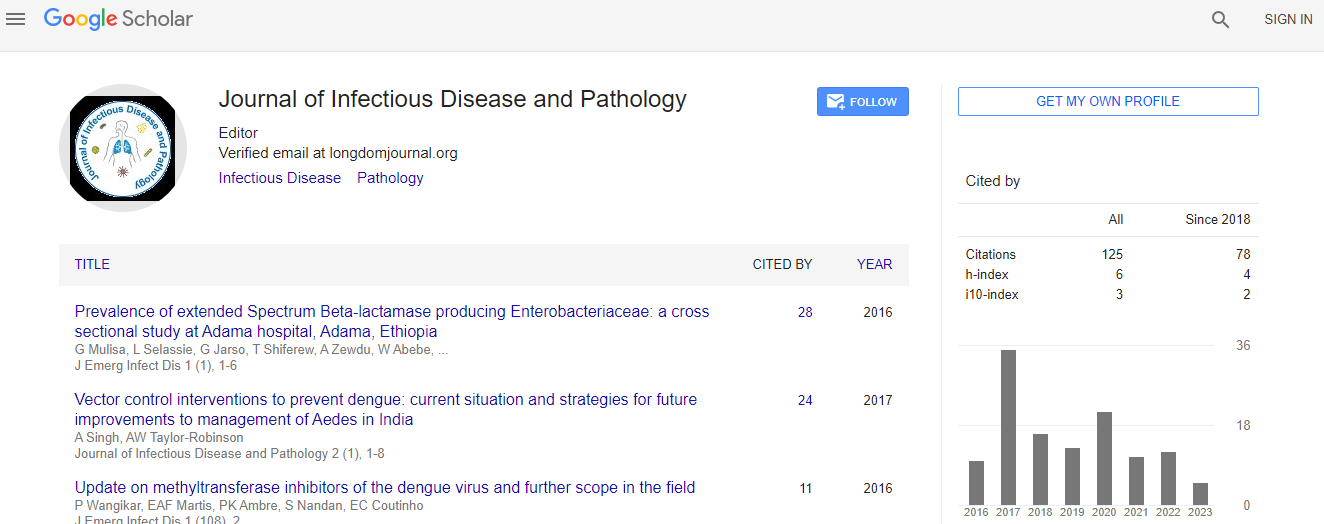Short Communication
Vigilance to Limit the Bidirectional Introduction and Co-circulation of Virus Serotypes Aims to Reduce Risk of Severe Dengue Disease in North East India
Leonie J Barnett1 and Andrew W Taylor-Robinson2*1School of Access Education, Central Queensland University, Bruce Highway, North Rockhampton, QLD 4702, Australia
2School of Medical & Applied Sciences, Central Queensland University, 160 Ann Street, Brisbane, QLD 4000, Australia
- *Corresponding Author:
- Andrew W Taylor-Robinson
Infectious Diseases Research Group, School of Medical & Applied Sciences
Central Queensland University, 160 Ann Street, Brisbane, QLD 4000, Australia
Tel: +61 7 3295 1185
E-mail: a.taylor-robinson@cqu.edu.au
Received date: October 13, 2016; Accepted date: November 09, 2016; Published date: November 20, 2016
Citation: Barnett LJ, Taylor-Robinson AW (2016) Vigilance to Limit the Bidirectional Introduction and Co-circulation of Virus Serotypes Aims to Reduce Risk of Severe Dengue Disease in North East India. J Emerg Infect Dis 1:115. doi: 10.4172/2472-4998.1000115
Copyright: © 2016 Barnett LJ, et al. This is an open-access article distributed under the terms of the Creative Commons Attribution License, which permits unrestricted use, distribution, and reproduction in any medium, provided the original author and source are credited.
Abstract
Dengue is a serious re-emerging arboviral disease that presents a global human health challenge. Infection is caused by one of several recognised serotypes of dengue virus, a member of the mosquito-transmitted Flaviviridae family of human pathogens, which also includes yellow fever, Zika and West Nile viruses. The greatest burden of dengue is borne by countries in the Asia Pacific region, in particular South East Asia and the Indian subcontinent where infection breaks out with increasing frequency and intensity. The World Health Organization South East Asia Region has a population of 1.3 billion people and includes 11 countries, of which Thailand, Myanmar and India have the highest reported incidence of dengue. Infection outcomes vary from the commonly asymptomatic or a self-limiting fever to more severe manifestations such as dengue haemorrhagic fever and dengue shock syndrome. Although primary infection with one serotype elicits lifelong immunity against homologous reinfection, severe dengue is linked to an antibody-related immunopathological response that is triggered by secondary infection with a heterologous serotype. The principal vectors of transmission are the day-biting mosquitoes Aedes aegypti and Ae. albopictus, the respective preference of which for urban and rural habitats has facilitated the rapid and continued spread of dengue across tropical and sub-tropical climatic zones. The narrow elevated corridor of North East India was considered historically to be non-endemic for dengue and as such separated areas of high endemicity in the Bengal Delta and the other zones of India from those in Thailand and Myanmar. In these regions the predominant serotype is usually distinct, so a breach of this geographical bottleneck would potentially enable the co-circulation of virus serotypes, thus posing an increased risk of severe disease upon secondary infection. This alarming scenario may now be realized following the notification of clinical cases in the states of Arunachal Pradesh, Assam and Manipur in recent years. While incidence is still sporadic in North East India limitation of local outbreaks is required through vigilant adherence to the integrated implementation of clinical management, diagnosis, surveillance and vector control in order to prevent the transcontinental spread of dengue.

 Spanish
Spanish  Chinese
Chinese  Russian
Russian  German
German  French
French  Japanese
Japanese  Portuguese
Portuguese  Hindi
Hindi 